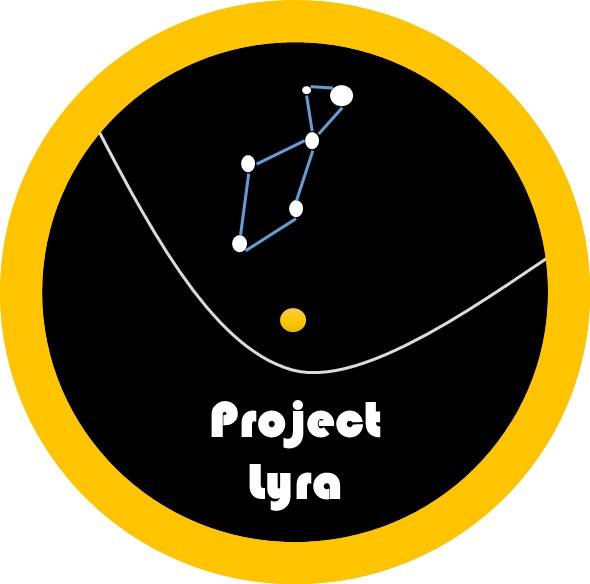
1st-known interstellar visitor
In 2017, astronomers uttered a jubilant hurrah as they confirmed the first-known interstellar visitor – the first known visitor from another star system – to our solar system. They named the object ‘Oumuamua, which means first distant messenger (in Hawaiian). Such objects had been predicted beforehand. But we’d never managed to glimpse one. And scientists caught only a fleeting glimpse of ‘Oumuamua, which was already speeding out of our solar system when they spotted it.
So they don’t know for sure what ‘Oumuamua was. A shard of an exoplanet? A comet spawned by another star? An alien spacecraft? ‘Oumuamua is now outside the range of earthly telescopes, never to be seen again … or is it? A team of scientists said this month (January 2022) they want to build a spacecraft to chase ‘Oumuamua down. They claim could reach ‘Oumuamua as early as 2047.
And they call their effort Project Lyra.
EarthSky 2022 lunar calendars now available! Order now. Going fast!
Project Lyra: Thinking outside the box
Scientists are developing Project Lyra with the goal of sending a spacecraft to reach interstellar visitors, and not just ‘Oumuamua. It’s worth noting that, so far, astronomers have only discovered one other interstellar visitor, which they call 2I Comet Borisov in 2019. The 2I stands for 2nd interstellar. Borisov was very clearly a comet. And ‘Oumuamua might be a comet, too. But the situation isn’t as clear with ‘Oumuamua; its true nature is still up for debate. So, in terms of a target for a spacecraft, ‘Oumuamua would be an interesting place to start.
Do all astronomers want to visit ‘Oumuamua? No (although they probably wouldn’t mind if someone else did it). Initiatives do exist for proposed missions to neighboring stars. So why go to ‘Oumuamua? Proponents of the mission point out that objects such as ‘Oumuamua and Borisov are much closer to us than stars. So they offer us a chance to observe interstellar material close up, if only we can catch up to them.
The Initiative for Interstellar Studies formed Project Lyra just 11 days after ‘Oumuamua’s discovery. The team has had the challenging task of assessing the feasibility of an exceedingly fast spacecraft. It would have to travel many times faster than the fastest spacecraft (the Voyager probes) yet built by earthlings.
Getting up speed to chase down interstellar visitor ‘Oumuamua
How could a spacecraft build up enough speed to catch up to ‘Oumuamua? Space fans know the answer. They know that – when an object traveling in space passes close to a more massive object – it can get a boost in speed. These boosts are called gravity assists, and NASA uses them all the time to speed up spacecrafts traveling within our solar system, or to fling them off on slightly different trajectories, so that they can reach their targets.
‘Oumuamua itself got a gravity assist as it passed the sun, thereby temporarily accelerating to speeds of about 196,000 miles per hour (300,000 kph). ‘Oumuamua’s average interstellar speed as it exits our solar system is about 58,800 miles per hour (95,000 kph).
To catch up to ‘Oumuamua, the spacecraft would need to travel at speeds of 74,000 to 163,000 miles per hour (120,000 to 262,000 kph). The spacecraft could use traditional chemical engines paired with flybys to catch up to ‘Oumuamua. That is the system NASA often uses for planetary spacecraft in our solar system. The scientists have also considered laser propulsion and solar sails, two methods of space travel that are, currently, in experimental phases.
Launch dates?
Depending on whether the spacecraft gets a boost at Jupiter or the sun, launch windows to ‘Oumuamua begin in 2028 or 2030. Adam Hibberd of the Initiative for Interstellar Studies told EarthSky that one type of rocket could get travel times down to less than 20 years:
If nuclear thermal rockets were used, then their potential would be a game-changer and mission durations would be much lower.
Of course, the sooner we launch, the sooner we get to ‘Oumuamua and begin to start unraveling its mysteries. And, as Hibberd told EarthSky:
The longer we wait to mount a mission, the farther ‘Oumuamua has receded from the sun, so the longer the total time-of-flight.

Using the Oberth maneuver
Project Lyra investigated two routes of sending a spacecraft to ‘Oumuamua using the Oberth maneuver. One passes the sun and one passes Jupiter. In both routes, the spacecraft fires its engine when at high speed near a massive object. Hibberd explained Oberth maneuvers to EarthSky:
You get maximum bang for your buck when you are traveling fastest, or in other words, at the closest point to the gravitational attraction, the periapsis point. To maximize energy increase, you need an attracting body with as high a mass as possible, because then your speed is higher at periapsis. Thus, the two largest bodies in the solar system – the sun and Jupiter – are excellent candidates for an Oberth maneuver.
Bottom line: Project Lyra makes plans for spacecraft that could chase down ‘Oumuamua and other interstellar visitors to our solar system.











